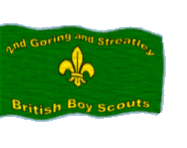 |
|||
 |
|||
 |
|
 |
 |
 |
Cycle Camp Preparation
|
Navigation: |
| Kitting Up |
| Kit List |
Kitting Up
In order to take part in one of our cycle camps, you will obviously require a cycle, but you will also need a rack/carrier and some pannier bags as we carry all our (lightweight) camping and cooking equipment with us on the cycle camp.
Suspension on bikes can
present extra problems, particularly if you have rear suspension,
because you will require a special pannier frame that will have
load limitations compared with normal pannier frames. These types
of racks can be obtained from 'Trial Junkies' at Goring, 'Rides on
Air' at Wallingford, 'Halfords' in Reading, or other good cycle
shops; all will usually fit these for you. It is strongly
recommended that they are professional fitted.
Suspension on bikes that are mainly road or for touring means that
you can lose energy when cycling because of the bounce, unless, of
course, you can lock out suspension. Bikes with full suspension
(except those costing tens of thousands of pounds) cannot be fully
locked out and are only suited for really rough rocky terrain and
really should be avoided when purchasing because the suspension is
an unnecessary expense for the type of cycling you are likely to
encounter.
Skip's bike (30 years old), a hybrid bike with
no suspension good for touring and general cycling (gears are a
bit old fashion compared with modern bikes) but by far the best
type of bike for Scout cycle camps and general cycling.
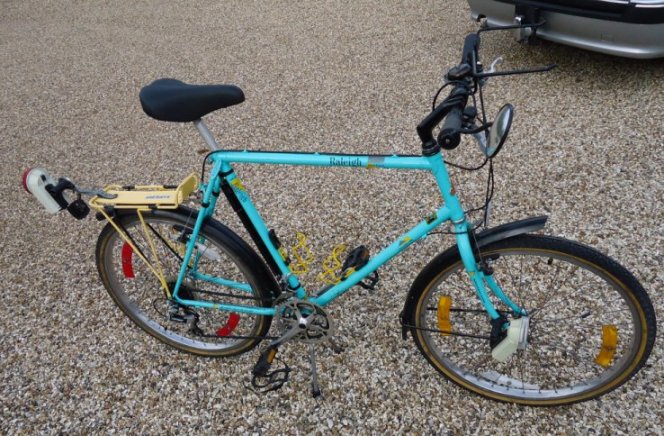
Stitchy's bike (1 year old), a hard-tail MTB with front suspension and front fork lock-out:

This is the type of frame you will need on your bike to be rigidly fixed.

Bikes with rear disc brakes require frames that clamp to the frame or have spacers, as there are sometimes no holes in the frame for the rack to be secured or the rear calliper is in the way.
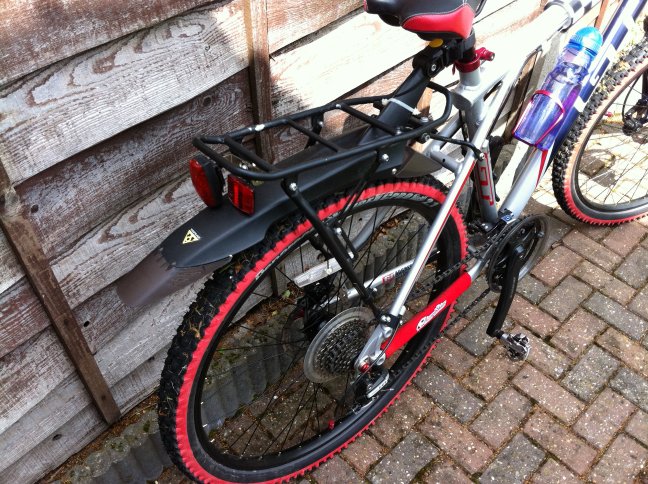
Bikes with rear suspension require a different sort of rack that usually bolts to or near the seat post.
The type of pannier bags
required, that can be obtained in different sizes, but around 20
litres per bag is the normal best size to get (look at them in the
shop and compare with the photo for size) and they should has a
side pocket and possible a waterproof cover. These can be obtained
from the stores listed above.

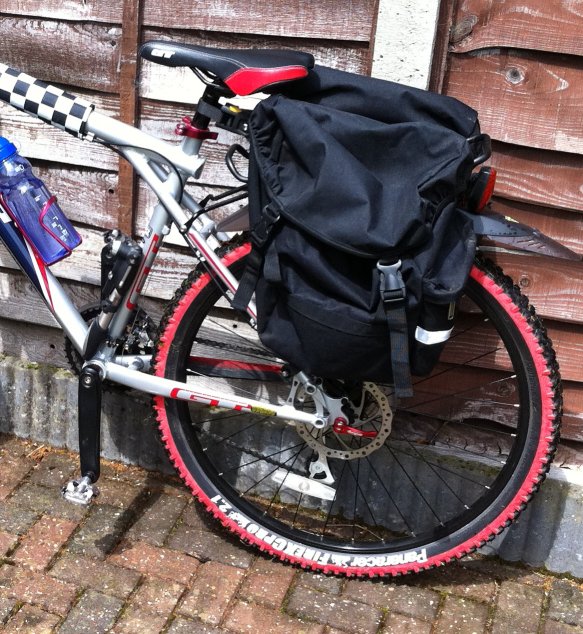
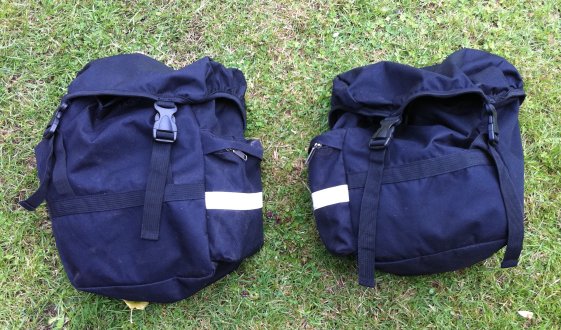
You will need a small lightweight sleeping bag, these are
bungee strapped to the top of the pannier frame between the bags,
along with your ground sheet and the part of the very lightweight
hike tents that we will be carrying. Skips sleeping bag as you can
see in the photos was obtained from Tesco for £9, but Decathlon
have similar bags for £7. Skips sleeping bag is approximately 5"
in diameter by approximately 9" long and weighs next to nothing.
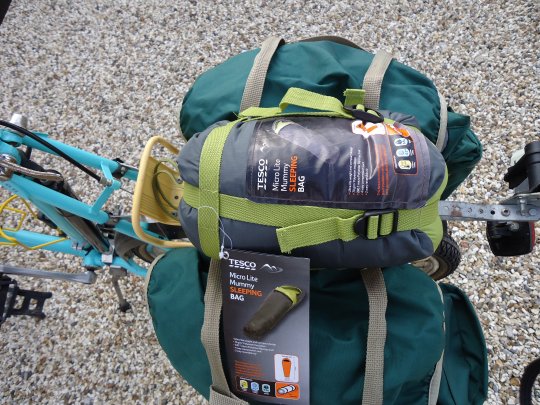
The below Berghaus Flare700 sleeping bag reports itself to be 4.3L in volume, 29cm * 14cm, and 751g
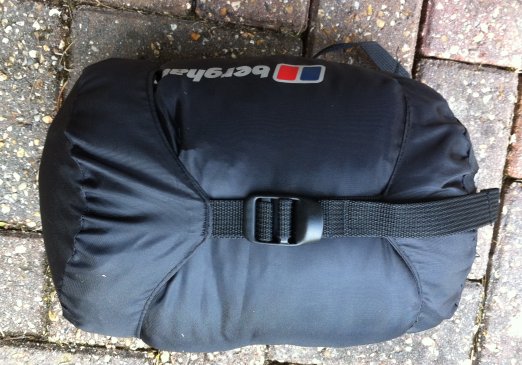
You will need a cycle helmet; water bottle fixed to your frame
or a camelback; the problem with camelbacks are that after a time
they make your drinking water smell (so bottles are preferred); a
small compact rain coat; two micro fibre lightweight towels these
are light in weigh and dry very quickly. These items are mentioned
on your kit list, please ensure that everything is minimal in size
(very small soap dish, small bottle of shampoo, no pressurized
spray deodorants roll-on are safer ~ just think small).
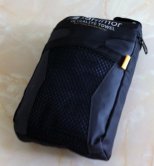


You will be issued with
half a tent, part of the lightweight cooking equipment to carry
with your personal kit.
Your Scout hat should be
protected with two cardboard doughnuts as below:
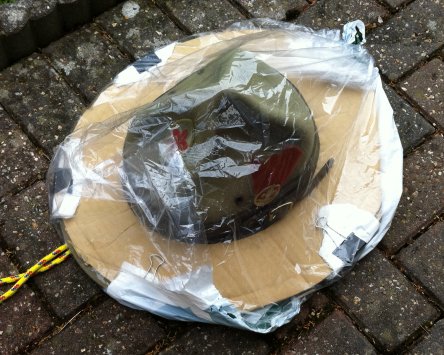
To do this, you will need to get two thick-ish pieces of cardboard (corrugated sides of cardboard boxes pictured) cut slightly (only a few mm) lager than the hat rim. On one piece of cardboard the hat will sit. The second piece of cardboard needs a hole cut in the middle so that it goes over the bowl of the hat and sits down on the top of the hat rim, sandwiching it between the two pieces of cardboard, thus keeping the rim straight. Large elastic bands (That Skip has) or bulldog clips (pictured) are used to keep the cardboard in place. You will then need to obtain a good quality waterproof carrier bag to put the hat in.
Then secure on top of your kit using cord:

In addition, each Scout
will need to carry a puncture repair kit and a pump that fits his
or her wheel valves. Most are Schreader (sometimes spelt Schrader)
valves and these are the same as valves on a car tyre, but some
high performance bikes will have presta valves. It is important
that your pump will fit your valve.
This site explains the different valves in more detail.
Kit List
In Panniers :
- Bowl, plate, knife, fork, spoon, Mug and egg cup in a bag;
- Tea Towel;
- Camp stove (part of supplied) or other cooking equipment shared between all;
- Regular shorts (two pairs);
- Underwear (7 pairs);
- Socks (3 pairs);
- Fleece (lightweight);
- T-shirts (3) to include min. 2 Scout Group T-shirts;
- Travel towel (fast drying micro-fleece);
- Pyjamas;
- Swimming trunks;
- Wash kit;
- Waterproof lightweight jacket;
- Cycle padded shorts or pants;
- Uniform (part to be worn).
In Pannier Pockets :
- Spare inner tube (check that it fits your bike);
- Suncream;
- Small torch;
- Needle & thread;
- Small notebook & pencil;
- Penknife;
- Camera (optional);
- 2 medium self-seal freezer bags for dirty cloths;
- Bike lock.
On top of Carrier Rack :
- Lightweight tent (part of);
- Sleeping bag and ground sheet in a waterproof lightweight bag or black sack;
- Scout hat, with hardboard or cardboard rim supports in poly bag.
In addition a pair of trainers will be best for cycling in (not boots). A cycle helmet must be worn whilst we are cycling and Scouts may want to wear additional high-visibility gear. A water(s) fitted to the bike or a camel back is also required. No rucksacks or backpacks (except camel backs) are to be carried on Scouts backs.
|
Pages and content © 2nd Goring and Streatley Scout Group | Disclaimer and Privacy Policy | Contact Us | Sitemap |



